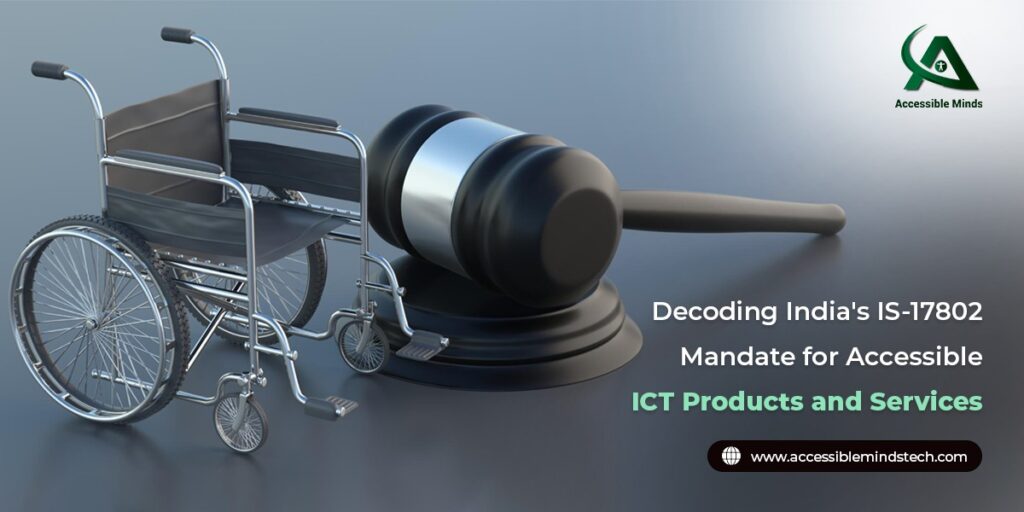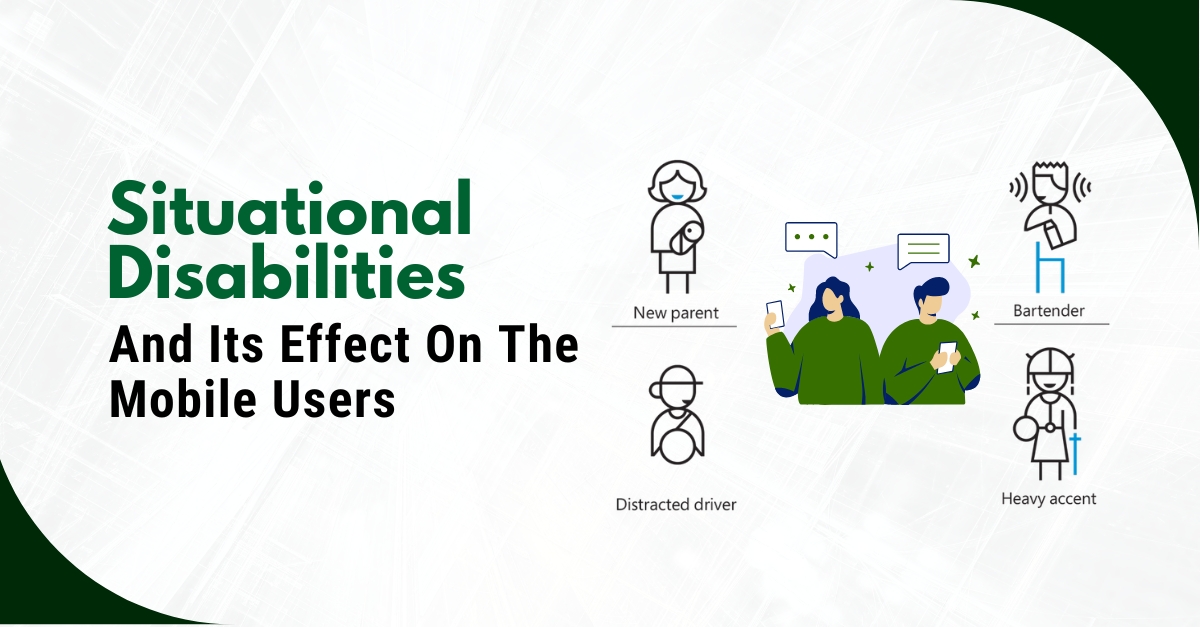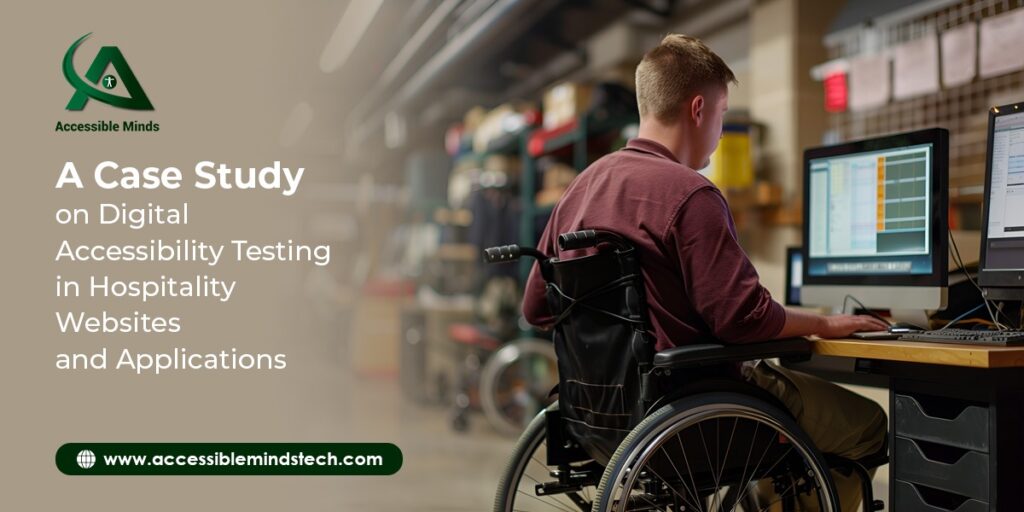Introduction:
India’s dynamic technological landscape has witnessed a transformative mandate, IS-17802, aiming to foster inclusivity in Information and Communication Technology (ICT) products and services. Enforced by the Bureau of Indian Standards (BIS), this mandate propels the nation towards a more accessible digital future. In this blog post, we embark on a journey to decode the intricacies of IS-17802, exploring its implications and spotlighting the crucial role played by Digital Accessibility Testing Services in ensuring compliance and promoting inclusivity.
Understanding IS-17802:
IS-17802, officially titled “Information Technology – Indian Language Data and Interface for Accessibility,” signifies India’s commitment to making technology accessible to all. At its core, the mandate is designed to ensure that ICT products and services cater to the diverse needs of users, with a specific emphasis on providing equal access for individuals with disabilities. By setting comprehensive accessibility guidelines, IS-17802 aims to create a digital ecosystem that prioritizes inclusivity and breaks down barriers to information and services.
Key Components of IS-17802:
Accessibility Guidelines:
The mandate delineates detailed accessibility guidelines that cover a spectrum of digital interfaces, including web applications, software, and mobile applications. These guidelines serve as a blueprint for developers and organizations, offering a clear roadmap to follow. Compliance with these guidelines is not just a regulatory requirement but a fundamental step towards contributing to a digital environment that values accessibility.
Indian Language Inclusivity:
A distinctive feature of IS-17802 is its emphasis on incorporating Indian languages into digital interfaces. Recognizing the linguistic diversity within the country, the mandate seeks to ensure that language barriers do not impede access to information and services. This aspect underscores the importance of providing a digital experience that is culturally and linguistically inclusive.
What Does IS-17802 Cover?
The IS-17802 standard encompasses a wide range of ICT products and services, including:
- Websites and web applications
- Mobile applications
- Software applications
- Kiosks and PoS devices
- E-learning platforms
- Public Information Systems (PIS)
- Television content and set-top boxes
- ATMs and other self-service terminals
Key Accessibility Principles of IS-17802
The IS-17802 outlines four core principles for accessible ICT products and services:
- Perceivable: Information and user interface (UI) elements must be presented in ways that can be perceived by all users, regardless of their sensory abilities.
- Operable: UI components and navigation must be operable using various input methods, including keyboards, screen readers, and assistive technologies.
- Understandable: Information and the operation of the ICT product or service must be clear and understandable for all users.
- Robust: Content should be compatible with a wide range of assistive technologies used by PwDs.
Ensuring Compliance with IS-17802
Complying with the IS-17802 mandate requires a proactive approach. Here’s how organizations can achieve compliance:
- Accessibility Training: Educate developers, designers, and content creators on accessibility best practices and WCAG (Web Content Accessibility Guidelines) standards.
- Accessibility Audits and Testing: Utilize Digital Accessibility Testing Services to evaluate your ICT products and services for compliance with IS-17802 and WCAG. These services involve manual and automated testing using assistive technologies to identify accessibility barriers.
- Remediation and Implementation: Based on the testing results, address identified accessibility issues and implement necessary changes to ensure your offerings are truly accessible.
Benefits of Utilizing Digital Accessibility Testing Services
Partnering with a reputable Digital Accessibility Testing Services provider offers several advantages:
- Expertise: These companies possess the specialized knowledge and experience to conduct comprehensive accessibility assessments.
- Efficiency: Testing services save time and resources compared to in-house efforts, allowing you to focus on core business activities.
- Technology and Tools: Testing companies utilize advanced tools and technologies to identify a wider range of accessibility issues.
- Objectivity: External testing provides an unbiased evaluation of accessibility compliance.
- Reputation Management: Demonstrating a commitment to professional testing builds trust and fosters a positive brand image.
Digital Accessibility Testing Services – Bridging the Gap:
In the pursuit of IS-17802 compliance, Digital Accessibility Testing Services emerge as pivotal enablers. These services play a crucial role in ensuring that ICT products and services not only meet regulatory requirements but also deliver an inclusive user experience. Let’s delve into the reasons why Digital Accessibility Testing Services are indispensable in the context of IS-17802:
Comprehensive Audits:
Digital Accessibility Testing Services conduct thorough audits of digital interfaces, employing a combination of automated tools and manual testing processes. These audits identify potential accessibility barriers, ranging from website content to software applications and mobile apps. The insights garnered from these assessments pave the way for targeted improvements.
Alignment with Guidelines:
The primary objective of Digital Accessibility Testing Services is to align digital products with the guidelines outlined in IS-17802. By rigorously evaluating each element against the specified standards, these services ensure that organizations not only comply with the mandate but actively contribute to creating a digital ecosystem that embraces inclusivity.
User-Centric Approach:
Adopting a user-centric approach, Digital Accessibility Testing Services simulate the experiences of individuals with diverse abilities. By incorporating real-world scenarios, these services identify and address potential challenges users might encounter, resulting in a more user-friendly and inclusive digital experience.
Continuous Monitoring and Improvement:
Accessibility is not a one-time effort but a continuous commitment. Digital Accessibility Testing Services provide strategies for ongoing monitoring and improvement, allowing organizations to adapt to evolving standards and technologies while maintaining accessibility compliance.
Challenges and Opportunities:
While the IS-17802 mandate and Digital Accessibility Testing Services hold the promise of a more inclusive digital future, challenges persist. Organizations may face obstacles related to awareness, budget constraints, and technical complexities. However, these challenges present opportunities for collaboration, innovation, and the development of a resilient ecosystem that prioritizes accessibility.
Conclusion:
Thus, IS-17802 serves as a catalyst for a more inclusive digital future in India. Organizations must recognize the significance of compliance with these accessibility standards and embrace Digital Accessibility Testing Services as strategic allies in this transformative journey. By doing so, they not only fulfill regulatory requirements but actively contribute to building a digital landscape where everyone, regardless of their abilities, can participate and benefit from the ongoing digital revolution. As India continues to evolve digitally, the synergistic relationship between IS-17802 and Digital Accessibility Testing Services becomes instrumental in shaping a more accessible and inclusive digital landscape for all.







